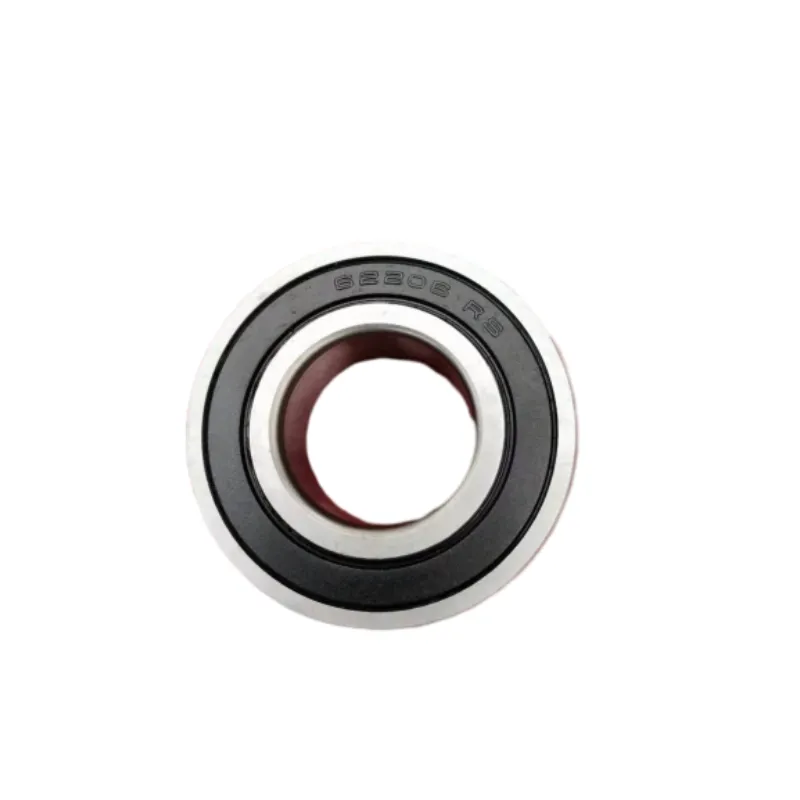
Dec . 15, 2024 04:01 Back to list
Understanding the Mechanics of Cone Roller Bearings for Enhanced Performance
Understanding Cone Roller Bearings A Comprehensive Overview
Cone roller bearings, also known simply as roller bearings, are critical components in various mechanical systems, providing essential support and facilitating smooth rotational movement. At their core, cone roller bearings are designed to handle radial and axial loads, making them indispensable in a myriad of applications ranging from automotive to industrial machinery.
Structure and Design
Cone roller bearings consist of an inner cone, an outer cup, and a series of tapered rollers. The inner cone, which fits onto the shaft, has a tapered shape that aligns with the tapered outer cup. The geometry of these components allows the bearing to distribute load evenly across the rollers and reduce contact stress. The tapered design is particularly advantageous because it allows the bearings to support both radial and axial loads simultaneously, enhancing their efficiency and performance.
The rollers themselves are typically made from hardened steel, providing excellent wear resistance and strength. The cage or separator, which can be made from various materials such as metal or polymer, serves to keep the rollers spaced evenly apart, preventing contact and reducing friction. This arrangement contributes to the longevity and reliability of the bearing.
Advantages of Cone Roller Bearings
1. Load Capacity One of the primary advantages of cone roller bearings is their high load capacity. The tapered shape of the rollers allows for a larger contact area with the raceways, enabling them to handle heavy loads without deformation.
2. Versatility Cone roller bearings are highly versatile and can be used in an extensive range of applications, including automotive wheel hubs, conveyor systems, and heavy machinery. Their ability to manage both radial and axial loads makes them suitable for complex mechanical systems.
3. Reduced Friction The design of cone roller bearings minimizes friction between contacting surfaces, which is vital for increasing the efficiency of the machinery in which they are used. This reduction in friction translates to lower energy consumption and heat generation.
4. Self-Aligning Capability Some designs of cone roller bearings have self-aligning features, allowing them to accommodate misalignment between the shaft and housing. This is particularly useful in dynamic applications where misalignment can occur due to wear or thermal expansion.
cone roller bearing

5. Ease of Maintenance Many cone roller bearings come pre-lubricated or sealed, minimizing the need for regular maintenance. This feature is particularly advantageous in industrial applications where reducing downtime is critical for productivity.
Applications
Cone roller bearings are widely integrated into several systems, each requiring reliable performance. In the automotive sector, they are extensively used in wheel hubs and transmissions, where they support rotation and help manage dynamic loads. In industrial settings, these bearings are vital for conveyor systems, pumps, and heavy machinery, where their durability ensures efficient operation over extended periods.
Additionally, they find applications in rail transport, where they support the heavy loads of trains, and in aerospace, where they contribute to the precision and reliability of aircraft components. The versatility of cone roller bearings allows them to fulfill diverse roles in various domains effectively.
Challenges and Considerations
While cone roller bearings offer numerous advantages, they are not without challenges. Proper installation and maintenance are crucial to ensuring their longevity. Misalignment, inadequate lubrication, or contamination can significantly reduce their performance and lifespan. Therefore, regular inspections and adherence to manufacturer guidelines are essential for optimal operation.
Moreover, as machinery evolves, so do the demands placed on bearing systems. Engineers continually strive to develop advanced materials and designs that can withstand harsher environments and higher loads while minimizing weight. Innovations such as ceramic rollers and advanced coatings are being explored to enhance the properties of cone roller bearings further.
Conclusion
In summary, cone roller bearings are fundamental components that play a vital role in the efficiency and reliability of numerous mechanical systems. Their unique design offers significant advantages, including high load capacity, versatility, and reduced friction. Despite challenges such as maintenance requirements and evolving operational demands, advancements in technology continue to enhance their performance and applicability. Understanding the nuances of cone roller bearings is essential for engineers and technicians looking to optimize their usage in various applications, ensuring smooth and efficient machinery operation for years to come.
Latest news
-
Premium Deep Groove Ball Bearings | High Speed & Reliability
NewsAug.29,2025
-
Durable Scaffolding Clamps - Secure & Reliable Tube Connectors
NewsAug.28,2025
-
Common Failures in Thrust Ball Bearings and Solutions
NewsAug.22,2025
-
How Tapered Roller Bearings Can Take Shock Loads
NewsAug.22,2025
-
Angular Bearings in High-Precision Spindles
NewsAug.22,2025
-
The Impact of Misalignment on Cylindrical Roller Bearing Performance
NewsAug.22,2025
